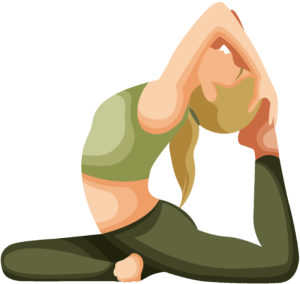One-Legged King Pigeon (Eka Pada Rajakapotasana)
Pose Overview
| Common Name | One-Legged King Pigeon |
| Traditional Sanskrit Name | Eka Pada Rajakapotasana |
| Sanskrit Name Pronunciation | e-kah pah-dah rah-jah-kah-poh-tahs-ah-nuh |
| Pose Difficulty | Advanced |
| Drishti
Drishti is the gaze or visual focus point during yoga poses.
Learn more about Drishti |
Upward, towards the sky |
One-Legged King Pigeon, also known as Eka Pada Rajakapotasana, is a challenging and invigorating backbend pose that is often included in advanced yoga sequences. The pose is named after the King Pigeon, which is known for its powerful and regal presence. The one-legged variation of this pose requires a great deal of strength, flexibility, and balance, making it an intermediate to advanced pose.
Benefits of One-Legged King Pigeon
One-Legged King Pigeon pose is a deep hip opener, which can help to relieve tension in the lower back and hips. The pose also strengthens the core, glutes, and thigh muscles, as well as stretching the chest, shoulders, and front of the neck. This pose can also help to improve balance and focus.
How to Enter One-Legged King Pigeon
Start in a kneeling position, with the knees hip-distance apart. Bring the left knee forward and place it behind the left hand, with the left ankle near the right hip. Bring the right knee back and place the top of the foot on the mat. Begin to lower the hips back, bringing the chest forward, and reaching the arms forward.
How to Exit One-Legged King Pigeon
To exit the pose, press into the hands and bring the hips forward, coming back to a kneeling position. Repeat on the other side.
Common One-Legged King Pigeon Modifications & Variations
One-Legged King Pigeon can be modified by placing a blanket or block under the hips for support. This pose can also be modified by using the hands to support the hips, rather than reaching the arms forward.
Common Mistakes with One-Legged King Pigeon
One of the common mistakes in this pose is not keeping the hips square. It is important to keep the hips level and facing forward, rather than letting one hip drop down.
Safety Guidance
Those with knee or wrist injuries should avoid this pose. If you have tight hips, be careful not to push too deeply into the pose and to come out of the pose if you experience any pain.

